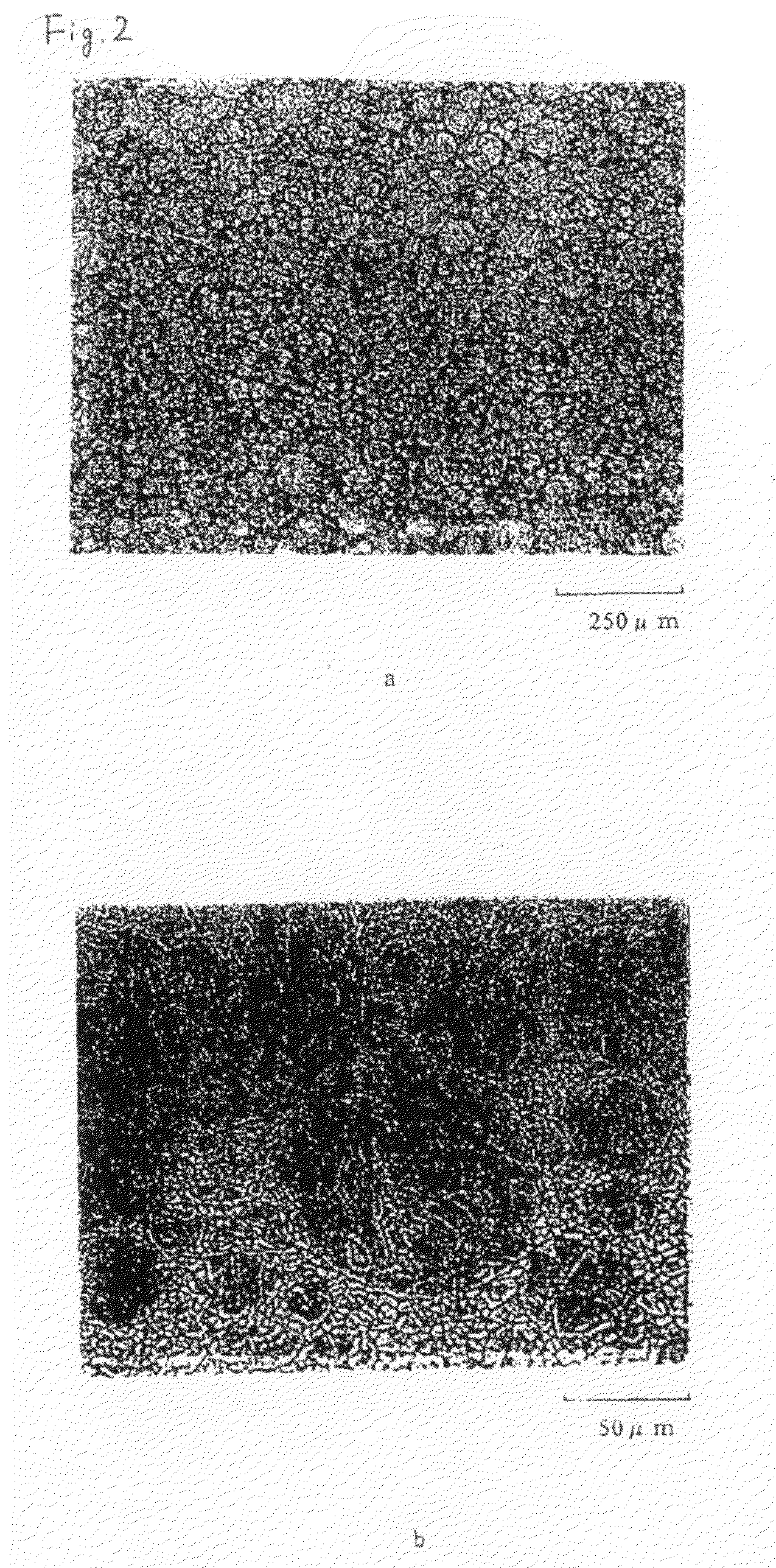Sb-Te Alloy Sintered Compact Target and Manufacturing Method Thereof
a technology of compact target and sputtering target, which is applied in the direction of diaphragm, metallic material coating process, record information storage, etc., can solve the problems of large amount of oxygen absorption, and cracks or fractures in targets, so as to reduce the generation of nodules, high density, and high transverse rupture strength
- Summary
- Abstract
- Description
- Claims
- Application Information
AI Technical Summary
Benefits of technology
Problems solved by technology
Method used
Image
Examples
example 1
[0035]Ge2Sb2Te5 alloy raw material was injected with a gas atomizer having a nozzle diameter 2.00 mmφ, argon gas (100 kgf / cm2) as the injected gas, and temperature of 780° C. in order to manufacture atomized powder. Fine spherical powder was obtained thereby. The oxygen content of this gas atomized powder was 250 ppm.
[0036]This atomized powder was further pressed and sintered. The press pressure was 150 kgf / cm2, and the press temperature was 600° C. The obtained sintered compact was subject to machining and polishing in order to obtain a Ge2Sb2Te5 alloy target.
[0037]As a result, the percentage of particles in which the flatness ratio (ratio of short axis and long axis) in the target structure is 0.6 or greater was 80%. Further, the oxygen concentration of this target was 350 ppm, and the flatness orientation ratio of the structure (particles exhibiting a long axis orientation aligned within ±45° in a direction that is parallel to the target surface) was 90%. Moreover, the relative d...
example 2
[0040]Ag5In5Sb70Te20 alloy raw material was injected with a gas atomizer having a nozzle diameter 2.00 mmφ, argon gas (100 kgf / cm2) as the injected gas, and temperature of 780° C. in order to manufacture atomized powder. Fine spherical powder was obtained thereby. The oxygen content of this gas atomized powder was 140 ppm.
[0041]This atomized powder was further pressed and sintered. The press pressure was 200 kgf / cm2, and the press temperature was 500° C. The obtained sintered compact was subject to machining and polishing in order to obtain an Ag—In—Sb—Te alloy target.
[0042]As a result, the percentage of particles in which the flatness ratio (ratio of short axis and long axis) in the target structure is 0.6 or greater was 85%. Further, the oxygen concentration of this target was 160 ppm, and the flatness orientation ratio of the structure (particles exhibiting a long axis orientation aligned within ±45° in a direction that is parallel to the target surface) was 80%. Moreover, the re...
PUM
| Property | Measurement | Unit |
|---|---|---|
| specific surface area | aaaaa | aaaaa |
| particle size distribution | aaaaa | aaaaa |
| surface roughness Ra | aaaaa | aaaaa |
Abstract
Description
Claims
Application Information
 Login to View More
Login to View More - R&D
- Intellectual Property
- Life Sciences
- Materials
- Tech Scout
- Unparalleled Data Quality
- Higher Quality Content
- 60% Fewer Hallucinations
Browse by: Latest US Patents, China's latest patents, Technical Efficacy Thesaurus, Application Domain, Technology Topic, Popular Technical Reports.
© 2025 PatSnap. All rights reserved.Legal|Privacy policy|Modern Slavery Act Transparency Statement|Sitemap|About US| Contact US: help@patsnap.com


